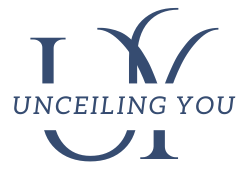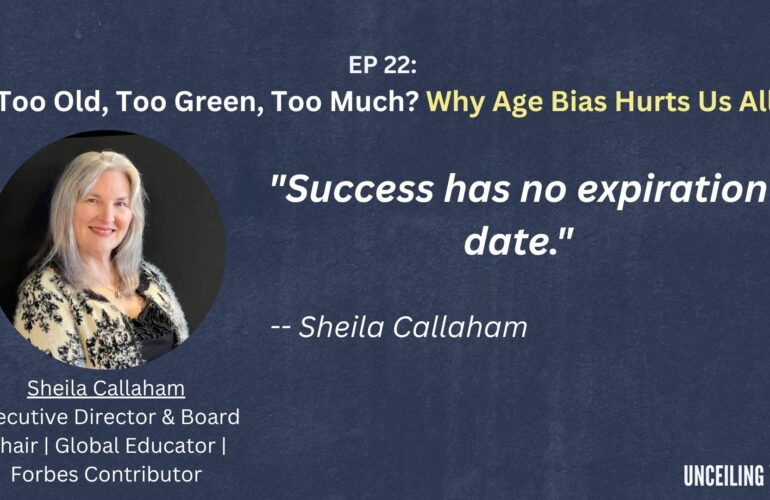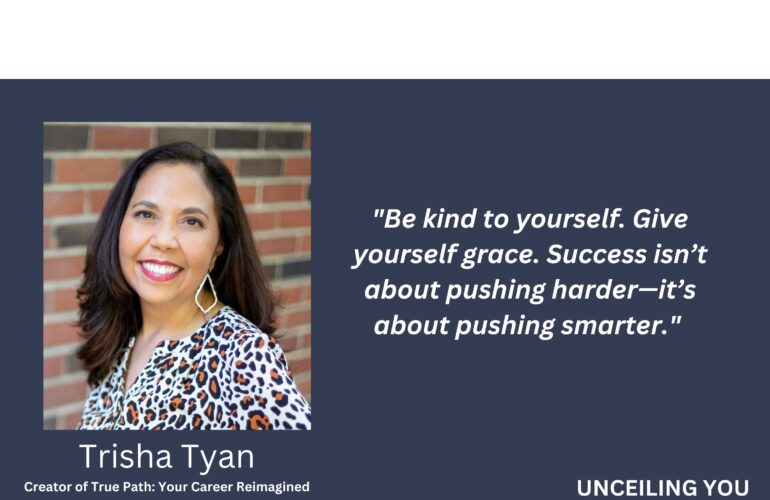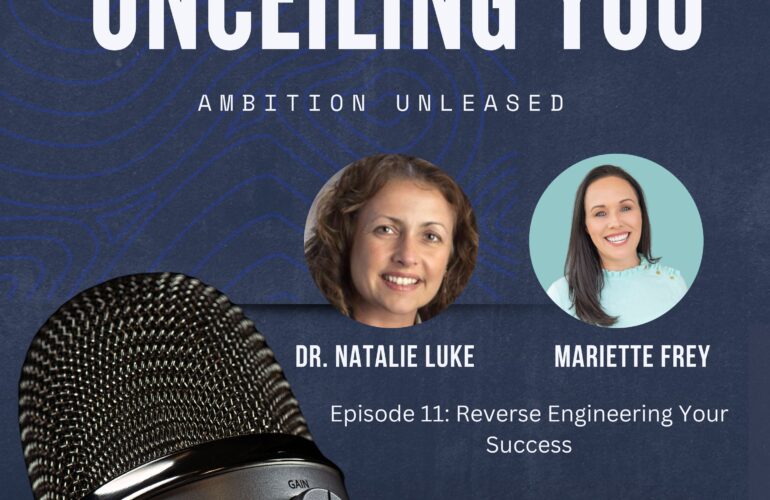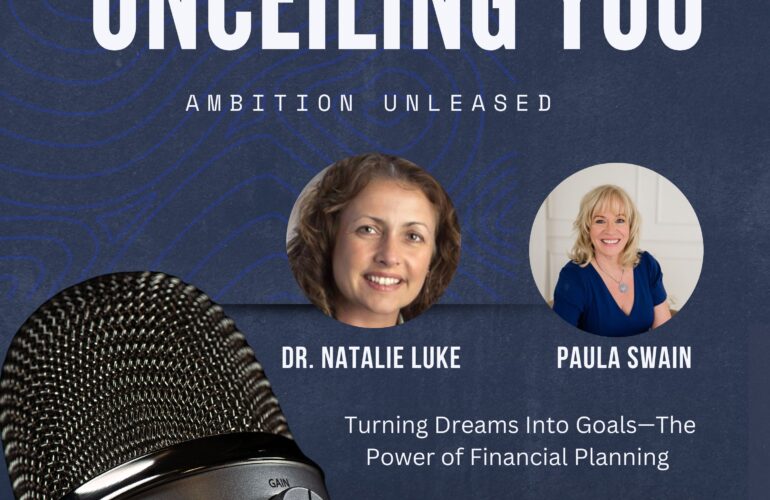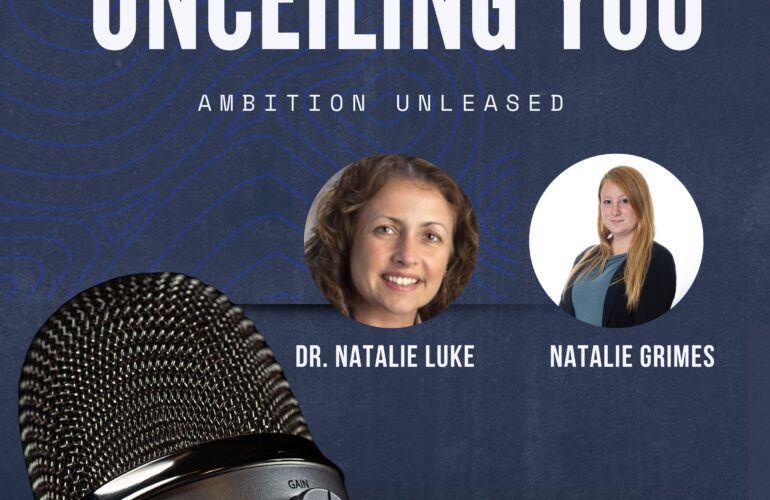Do you ever find yourself spiraling into self-doubt, with a little voice in your head saying, “You’re not good enough,” or “You’ll fail”? That voice is your inner critic, and while it’s a common experience, it can hold you back from reaching your potential if left unchecked.
In this episode of UnCeiling You, therapist Natalie Grimes joins me to explore the origins of the inner critic and, more importantly, how to manage it. Whether it’s affecting your confidence at work, on the tennis court, or in your daily life, Grimes’s practical strategies can help you turn self-doubt into self-empowerment.
What Is the Inner Critic?
The inner critic is the voice inside your head that magnifies your insecurities and doubts. Grimes explains that this voice often starts in childhood as a survival mechanism to protect us from perceived failures or dangers. However, it can become overly critical as adults, holding us back rather than helping us.
One powerful takeaway from this episode is the idea of naming your inner critic. For me, that voice is called Natasha. Grimes shares why naming the inner critic is a great idea.
“When we learn to label and distinguish ourselves from our negative thoughts, we gain control over them and stop identifying with them.”
Why Naming Your Inner Critic Works
Naming your inner critic is a small but powerful step toward separating negative thoughts from your identity. By doing this, you can observe those thoughts objectively and decide how to respond.
For example, during a tennis match, Natasha—the name I gave my inner critic—told me, “Don’t miss this serve.” Instead of letting her overwhelm me, I acknowledged her presence and decided to shift my focus. I imagined how my future self—Natalie 2.0—would feel and act in that moment, channeling confidence and focus to win the game. This slight mindset shift made all the difference.
How to Quiet the Inner Critic
If your inner critic often takes over, Grimes offers actionable strategies to regain control:
- Label and Separate the Critic from Yourself
- Acknowledge the critic’s voice without letting it define you.
- Grimes emphasizes, “Your inner critic is not your identity. It’s a voice, and you have the power to turn down its volume.”
- Practice Mindfulness
- Mindfulness helps you observe your thoughts without judgment. Ask yourself:
- What emotions am I feeling right now?
- How is my body reacting?
- By slowing down and identifying these patterns, you can respond thoughtfully rather than react impulsively.
- Challenge Negative Thought Patterns
- Grimes explains common thought distortions like:
- Catastrophizing: Jumping to the worst-case scenario.
- “Should” Statements: Unrealistic expectations like, “I should be perfect.”
- Counter these thoughts with reframes such as, “I’m learning,” or “I don’t have to be perfect to make progress.”
- Visualize Your Future Self
- Imagine the best version of yourself—your own 2.0—and focus on how that person would act, think, and feel.
The Inner Critic at Work
The inner critic doesn’t just show up during personal challenges—it’s often loudest in professional settings. I shared a story with Grimes about receiving a compliment from a senior leader at work. While the compliment was positive, my inner critic latched onto a single phrase, twisting it into a negative. Grimes explained,
“The inner critic thrives on insecurity and often distracts us from the full context of a situation. By naming it and creating space, you can refocus on the positive.”
New Level, New Devil
As you grow personally and professionally, the inner critic evolves, too. From Episode 2, remember we learned, “New level, new devil.” Each growth stage brings new challenges, but with the right tools, you can continue to quiet self-doubt and embrace confidence.
Beginner Tips for Managing the Inner Critic
If you’re just starting to recognize your inner critic, Grimes suggests these steps:
- Notice Patterns: Pay attention to when and why your inner critic gets loudest.
- Journaling: Writing down your thoughts can help you track and evaluate recurring themes objectively.
- Therapy: A professional can guide you through this process and provide personalized strategies.
Key Takeaways from Natalie Grimes
This episode is packed with practical insights to help you manage your inner critic. Here are a few of Natalie’s standout quotes:
“Naming your inner critic helps you take control over negative thoughts and emotions.”
“Mindfulness allows you to observe your thoughts without judgment, creating space to respond instead of react.”
“Shame says, ‘I’m flawed.’ Guilt says, ‘I made a mistake.’ Knowing the difference is key to self-awareness.”
Listen Now
Ready to meet your inner critic and learn how to tame it? Tune into the latest episode of UnCeiling You featuring therapist Natalie Grimes. This conversation is perfect for anyone looking to improve their mindset and unlock their potential.
🎧 Listen to the episode here: https://player.captivate.fm/episode/c6c2339f-12ee-4d70-b714-a578733715e8/
🎧 Watch now and get inspired to unceiling your potential! 👉 https://youtu.be/KyBH7-E4XPY
Connect with Us
We’d love to hear from you!
- What’s the name of your inner critic?
- How do you manage self-doubt?
Drop a comment below or send us a message—we may feature your story in a future episode! Don’t forget to subscribe, rate, and review UnCeiling You to help more people discover the show.
Follow Us on Social Media:
Let’s take the first step together toward silencing your inner critic and embracing the best version of you!
